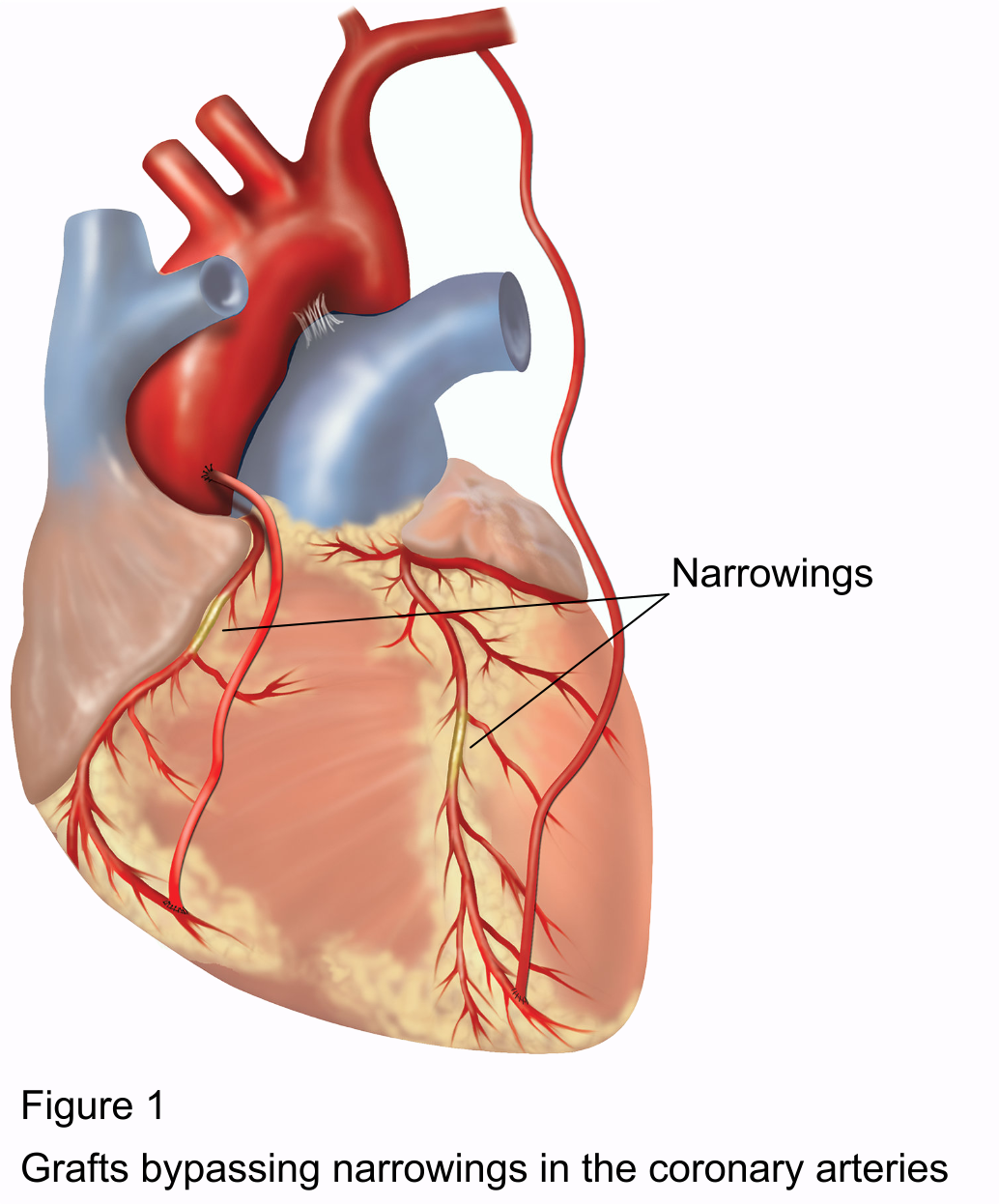Coronary Artery Bypass Grafting
Issued September 2018
Expires end of December 2019
This document will give you information about a coronary artery bypass graft. If you have any questions, you should ask your GP or other relevant health professional.
What is coronary artery disease?
Coronary artery disease is a narrowing of the coronary arteries (blood vessels that supply the heart muscle with oxygen). It reduces the blood supply to the heart muscle, leading to angina and heart attacks.
What are the benefits of surgery?
You should get less pain. Surgery may also improve your breathing and how well your heart works. Sometimes surgery can reduce the risk of you having a heart attack.
Are there any alternatives to surgery?
For some people it may be possible to have a percutaneous coronary intervention (PCI) to widen or unblock an artery using a small inflatable balloon. A stent is usually used to hold the artery open.
Medication can be used to relieve the symptoms of coronary artery disease.
What does the operation involve?
The operation is performed under a general anaesthetic and usually takes about three hours. Your surgeon will make a cut down the front of your chest, through your breastbone. You will be connected to a heart-lung machine, which allows your heart to be still while the bypasses are performed.
Your surgeon will use a length of blood vessel, taken from elsewhere in your body, to bypass the blockage and so restore a good blood supply to your heart (see figure 1).

What complications can happen?
1. General complications
- Pain
- Bleeding
- Unsightly scarring
- Blood clots
2. Specific complications
- Stroke
- Infection of the surgical site (wound)
- Heart attack
- Death
How soon will I recover?
After the operation you will be transferred to the cardiac intensive-care unit or high-dependency unit for a few days, and then to the ward.
You should be able to go home after 7 to 10 days. The healthcare team will tell you when you can return to normal activities.
Regular exercise should help you to return to normal activities as soon as possible. Before you start exercising, ask the healthcare team or your GP for advice.
Most people make a good recovery, with relief from angina, but symptoms can sometimes come back.
Summary
Coronary artery disease can cause pain, shortness of breath and heart attacks. A coronary artery bypass graft can relieve your pain and may help you to live longer.
Acknowledgements
Author: Prof. Julian Smith MBMS MSurgEd FRACS FACS FCSANZ FAICD
Illustrations: Medical Illustration Copyright © Medical-Artist.com
This document is intended for information purposes only and should not replace advice that your relevant health professional would give you.
